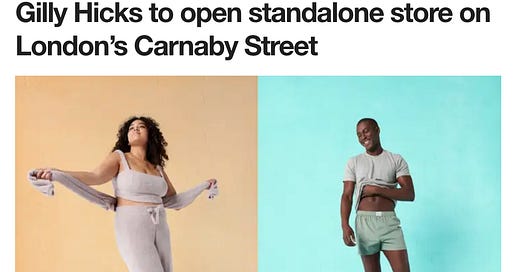A buddy of mine a while back showed me a Value Investors Club post on how Abercrombie & Fitch (ANF) is cheap and not the ANF we probably all remember as kids. The post is worth reading and I recommend it over this one. I have a small ANF position based on the ideas outlined over at VIC and I bought more today when the stock plummeted 13% after missing on EPS and reporting a Q1 22 and FY 22 guide that was softer than expected. I want to briefly explore in this post how I think ANF is cheap and why the market hates it (and may be right).
I am decently exposed to retail (current positions: BIG, ANF, BBWI) because I believe a lot of the businesses improved during COVID by getting cheaper leases, embracing omnichannel retail (side note: the IDFA changes everyone is bemoaning are hurting small companies and not larger companies if you believe this podcast with BMO MD Simeon Siegel and Bill Brewster) and closing down underperforming stores. Many retailers had strong / record 2020 / 2021s and funnily enough the narrative has changed from “retail is dead” to “retail got a one time COVID bump and is now back to normal”.
“Normal” retail is not a good business. ANF is guiding to do 7-8%ish operating margins in 2022. Embedded in that forecast is that Europe and other parts of the world continue to come back from COVID and buy close to the prices they’re buying at now. If history is any indicator, those forecasts don’t always play out perfectly and that is one of numerous risks of investing in retail.
And yet… I think a lot of these concerns are priced in. Let me give you some metrics on ANF’s cheapness:
ANF as I write this has $1.76bn market cap, $823m in cash and $308m in debt (~47% of market cap in cash, ~24% in net cash)
ANF is projecting a 2-4% increase in sales from 2021 ($3.71bn). If I take the low number (2%), I get $3.78bn. If I take the low end of operating margin at 7%, I have $265m of EBIT. ANF trades 4.7x EV/EBIT
D&A in 2021 was $144m and in 2020 was $166. Let’s take the average and call it $155. EBITDA is $420m. ANF trades 2.96x EV/EBITDA.
On the FCF side, the company said it’d do $150m in capex this year, so EBITDA - Capex gets you to $270mm. Taking out $0 of working capital and say $100m of cash interest and taxes (which is probably too large), I’m at $170m of FCF, which as a percentage of the market cap after net cash gets close to a 15% yield. Note on capex, the company will actually be a net store opener this year, so you’d hope some of these investments pay off in the future
If you go back to my last post, I make the point an asset at a 15% FCF yield with no growth is a 15% return just measuring the terminal value. This is before buybacks or any good capital allocation decisions (ex. new stores result in growth)
I’d say this company is priced to do next to nothing in the future. If you believe ANF can go flat on sales and maintain margins, it will have the market cap in cash in a few years and definitely will buy back a large chunk of stock (it repurchased 15% of the float in 2021). The company said on the call today they’d use excess cash to repurchase shares, and the shares are now within ~15% of the 52w low of $26.
Other shots on goal for ANF:
Social Tourist and Gilly Hicks are both growing brands that are relatively young especially compared to Hollister and Abercrombie. We’re going to hear more about Gilly at Investor Day per the call
The company is about 50-50 on digital versus physical sales. Even if the digital percentage goes down, I think that alone makes this very different from ANF pre-pandemic (used to be at 33%ish)
I think Fran Horowitz (CEO since 2017) has a great understanding of digital marketing and where the puck is going in retail, really enjoy listening to her commentary on calls. She revealed this quarter Hollister got 175m impressions on Tik-Tok on BFCM and ANF has a virtual Snapchat store that did 30m impressions
Then why does the market hate it? I think the reason has to be that it’s calling management’s bluff and thinks the consumer is tapped out. We’ve all read the headlines on:
Soaring oil prices
The Fed raising rates / ending accommodative policies
Pair this with:
Many retailers (ANF included) assuming they can pass high prices through
Many retailers (ANF probably included) assuming they can accurately right size inventory to demand and play the end of the supply chain crisis right
The market IMO thinks we’re going to end up with retailers who flood the market with supply and consumers who don’t want to pay for the latest Hollister jeans when gas costs $5 a gallon and their variable rate mortgage resets higher.
This is a take, and there are probably other risks I’m overlooking, but my thesis here is the consumer has more attachment to ANF and other strong retailers than the market expects. I acknowledge demand is likely to level off this year relative to 2020 and 2021. The end of the supply chain crisis may cause over-ordering. But at <3x EBITDA with a management team I like… I’ll take my chances.



